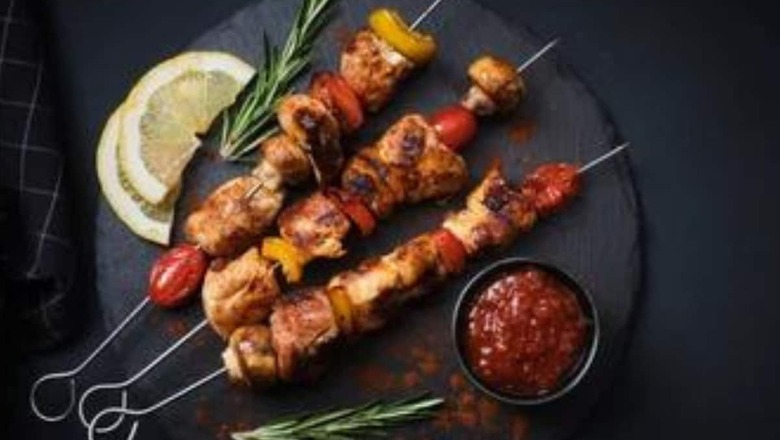
views
Grilling food on sticks is one of the most primal and satisfying ways to cook dinner in the summer — frankly, any time you are willing to cook outside or something extravagant at home.
We’re talking here about kebabs, or as you might find them spelt, kebobs, kabobs or shish kebabs. Kebabs can be made from many kinds of meat, seafood, fish, poultry or vegetables, or a combination thereof. Once everything is all skewered up, the cooking process is usually relatively fast. That’s because the food you’re cooking has been cut into small pieces.
There is also a world of ground-meat kebabs out there, which might be called koftas, brochettes or seekh kebabs. These are ground meat moulded onto skewers, and they are delicious.
The meat varies from culture to culture, as do the spices and seasonings. In all cases, make sure your grill is well-oiled so they don’t stick.
THE SKEWERS
Metal skewers are studier, reusable and flameproof. They do get quite hot on the grill though, so need to be handled with care. If you’re using disposable wooden or bamboo skewers, buy ones that are at least 12 inches long, and soak them in water for at least 30 minutes to prevent them from catching on fire.
Either way, look for skewers that have slightly flat prongs (the stick or blade part), which makes it easier to turn them without the food spinning on the stick.
THE FIXINGS
For meat, choose a cut that is tender and takes well to a fast sear. Don’t grab a package of stewing meat, such as chuck or brisket, because those need long, slow cooking to reach tenderness.
If you’re using beef, filet or tenderloin offer the most tender kebabs. For pork, use cubed, thick pork chops or tenderloin meat, not shoulder, butt or any of the longer-cooking, tougher cuts. For lamb, look for shoulder or leg meat, and for chicken, you can use either dark or white meat, with white needing a slightly shorter cooking time.
For seafood, make sure the pieces are big enough to get a bit of colour on the outside without overcooking throughout. For instance, bay scallops are too small to easily skewer, and will cook so quickly that they won’t take on much flavour from the grill. Larger sea scallops allow for a bit of browning while the inside remains creamy and tender. Same with shrimp – choose shrimp that are jumbo (16/20 per pound) or larger.
Some cooks like to alternate meat and vegetables on the same skewers. The biggest advantage of this is visual appeal. However, different types of vegetables cook at different rates, and definitely at different rates than various meats and seafood. So choose items that will be cooked to your liking at roughly the same time.
Keeping things separate means you can tailor the cooking time to the specific type of food on the skewer.
As for the size of your skewered foods, larger items will take longer to cook, but in general, stay more tender inside. Smaller items will cook faster and have a more browned surface area.
Most meat should be cut into pieces about 1 ½-inches large; keep in mind the meat will shrink a bit as it cooks.
How tightly should you pack your skewers? Separating the items a bit allows them to cook faster and get more caramelization on more sides. However, pressing the foods up against each other will ensure more juiciness in your meats.
Turn your skewers frequently when cooking so that all sides get nice grill marks.
Often, kebab recipes include a marinade to deepen the flavour and keep the foods tender as they cook. You can marinate proteins like chicken and meat, as well as vegetables, for up to one day before kebabbing them. Fish and seafood should only marinate for a few hours, as they might start to turn mushy, especially if there is acid in the marinade. If time is a factor, just toss everything with the marinade before grilling.
Most kebabs are best cooked over direct medium-high or high heat. Make sure your grill grates are clean, hot, and brushed with oil before you start grilling.
And if outdoor grilling isn’t in the cards, make your kebabs inside on a grill pan or in the broiler.















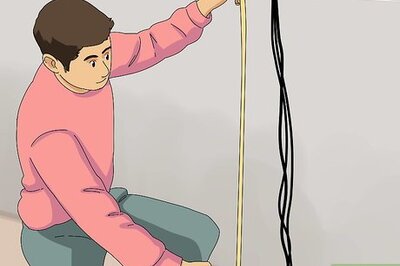
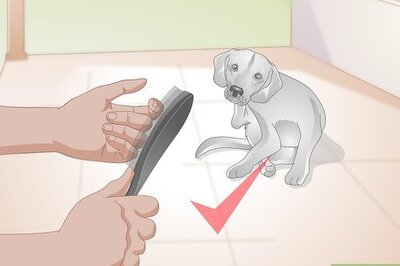
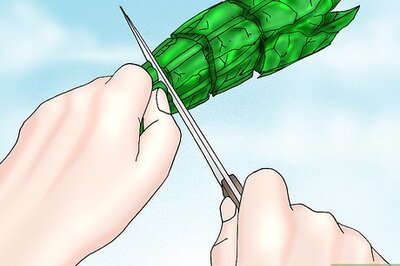
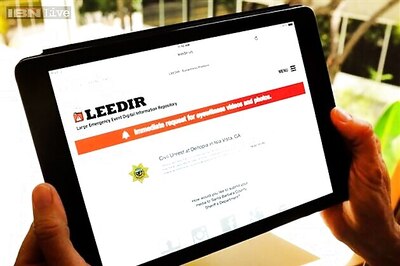
Comments
0 comment